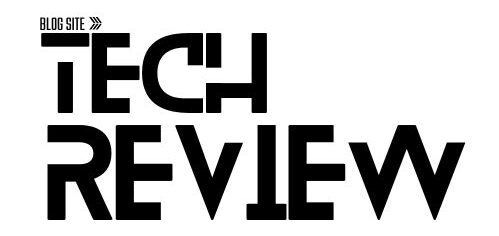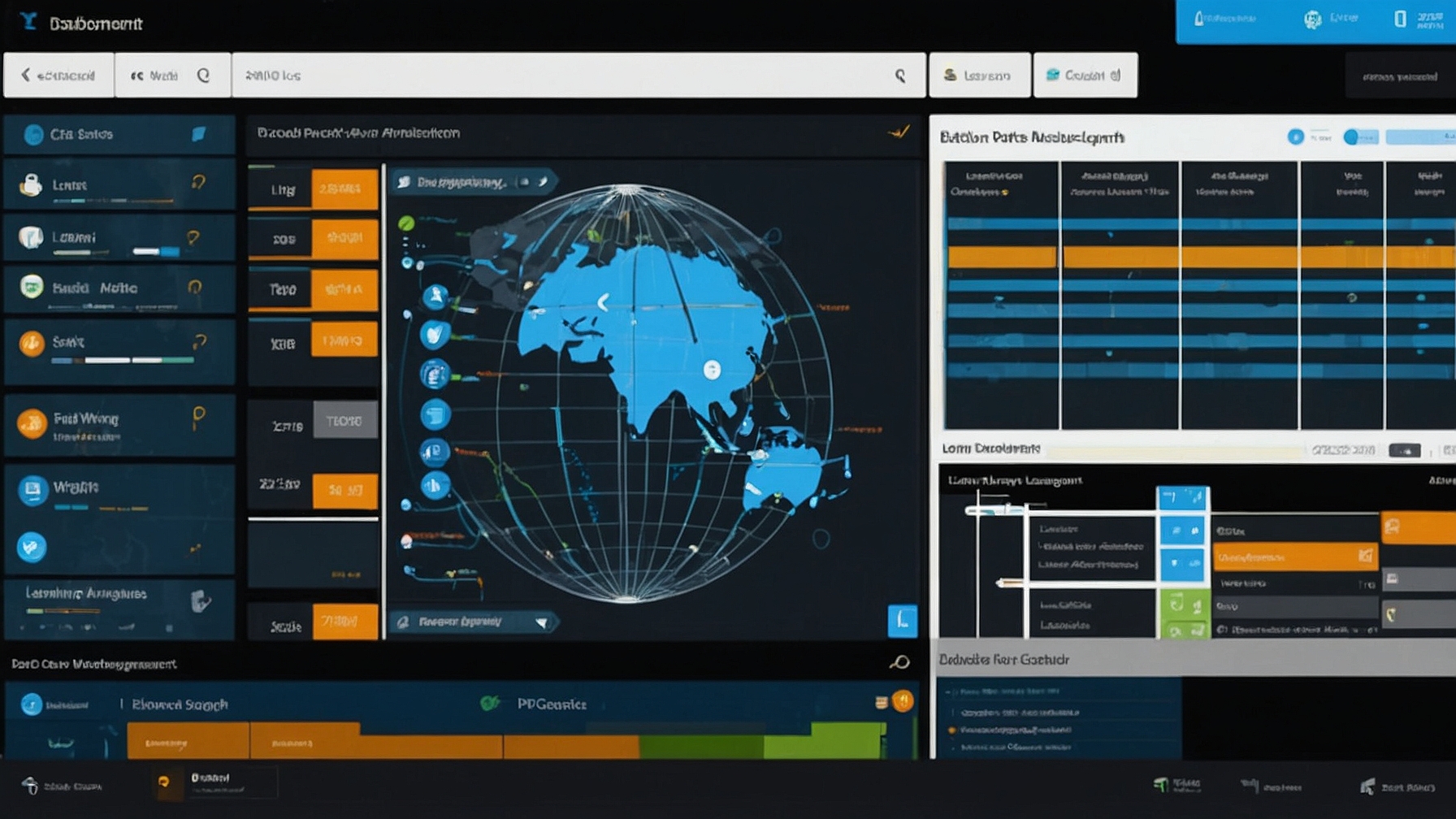Estimated reading time: 21 minutes
Introduction
The transformative power of free cloud-based LMS (Learning Management System) platforms in 2024 cannot be overstated in the rapidly evolving landscape of education and professional development. As we delve into this comprehensive guide, we uncover the best free learning management systems available, offering unparalleled access to online learning and training opportunities. These platforms have become pivotal in democratizing education, providing a suite of authoring tools, social learning features, and management software solutions catering to diverse learning needs. Whether you’re an educator looking to extend your classroom’s reach, a business aiming to streamline training processes, or an individual seeking to enhance personal skills, the right LMS solution can significantly impact your educational journey. With features ranging from completely free access to online courses and training modules, to advanced functionalities like social learning integration and comprehensive management tools, these systems are designed to foster an engaging and effective learning environment.
What sets these platforms apart is their affordability, robustness, and flexibility. In 2024, the best learning management systems are those that not only offer a free trial but also provide a rich ecosystem for online training and course creation. These platforms support many learning platforms, including online courses, interactive content, and real-time collaboration, making learning accessible to anyone with an internet connection. The emphasis on user-friendly design, coupled with powerful analytics and customization options, allows educators and trainers to tailor their teaching strategies to meet the unique needs of their learners. Furthermore, the best learning management system integrates seamlessly with various authoring tools and third-party applications, enhancing the learning platform with rich multimedia content and interactive features. As we explore these free cloud-based LMS platforms, it becomes clear that the future of education lies in the ability to adapt and innovate, ensuring that learning is not only accessible but also engaging and relevant to the needs of a diverse global audience.
KeyTakeaaways
- Discover the best free cloud-based LMS platforms of 2024, offering comprehensive online learning and training solutions that cater to diverse educational needs and preferences.
- Identify the essential features that distinguish a top-rated free LMS, including user-friendly interfaces, robust learning tools, and effective management software capabilities.
- Understand the differences between open source and proprietary LMS options, highlighting the benefits and considerations of each to help you make an informed decision for your learning environment.
- Explore strategies for customizing and optimizing your free LMS to enhance the learning experience, making it more engaging and tailored to specific learning objectives.
- Gain insights into predictions for the future of free learning management systems, emphasizing innovation, accessibility, and the role of technology in transforming education.
Understanding Free Cloud-Based LMS in 2024
In the evolving digital age, the significance of free cloud-based LMS (Learning Management System) platforms in the educational and corporate training landscapes has never been more pronounced. As we step into 2024, these platforms stand at the forefront of a revolution, democratizing access to education and professional development opportunities across the globe. The shift towards online LMS solutions has accelerated the growing need for flexible, accessible, and scalable learning content delivery methods. This transformation is not just about technological advancement; it’s about changing how we perceive education and training, breaking down barriers to access, and fostering a more inclusive learning environment.
My journey into free LMS platforms began as a quest to find a sustainable, cost-effective solution to extend my classroom’s reach beyond physical boundaries. The transition was driven by a desire to provide my students with uninterrupted access to learning content and online training courses, irrespective of their geographical location or financial constraints. The experience was enlightening, revealing the untapped potential of free LMS systems not only as a training solution but as a comprehensive educational tool that could adapt to the diverse learning needs of my students. It was a testament to the power of these platforms to transcend traditional learning modalities and create a more connected, engaged, and informed learning community.
The Rise of Free LMS Software
The popularity of free learning management systems has been propelled by several key factors. Firstly, many LMS platforms’ free version or free plan offerings have made sophisticated educational technology accessible to institutions and organizations of all sizes. This inclusivity has been instrumental in leveling the educational playing field, allowing smaller entities to compete with larger organizations regarding the quality of education and training provided. Additionally, the 14-day free trial periods and free plans serve as a risk-free gateway for educators and trainers to explore the capabilities and fit of various LMS platforms before committing financially.
Key factors driving the popularity of free learning management systems
- Accessibility: Ensuring that quality education is accessible to everyone, regardless of location or financial status.
- Flexibility: Allowing educators to tailor learning experiences to the specific needs of their students or employees.
- Scalability: Facilitating the growth of educational programs to accommodate an increasing number of learners.
- Innovation: Driving the adoption of new learning technologies and methodologies.
Core Benefits for Educators and Learners
The core benefits of free LMS platforms for educators and learners are manifold. For educators, these platforms offer a powerful learning management software toolkit for creating, delivering, and managing online training courses and learning programs with ease. The ability to use an LMS to curate personalized learning experiences enhances learning outcomes and engagement rates. For learners, the flexibility to access learning content anytime and anywhere fosters a more inclusive and equitable learning environment. This accessibility is crucial in bridging the educational divide, ensuring that learners from diverse backgrounds can pursue their educational goals without the limitations imposed by traditional classroom settings.
As we delve into the intricacies of free cloud-based LMS platforms in 2024, it’s clear that these systems are not just a temporary trend but a pivotal component of the future of education and training. By providing accessible, flexible, and innovative learning solutions, free LMS platforms are reshaping the educational landscape, empowering educators to deliver high-quality education and learners to achieve their full potential. The journey towards a more inclusive, engaged, and informed learning community continues to unfold, with free LMS platforms leading the way.
Features to Look for in the Best Free LMS Software
In the digital era where education and training are becoming increasingly accessible, the role of Learning Management Systems (LMS) has become central in providing structured and effective learning experiences. Identifying the crucial features that elevate the functionality of free LMS software is paramount for educators, trainers, and businesses aiming to make informed decisions about the tools they adopt. The best LMS platforms offer a balance between comprehensive functionalities and user-friendliness, ensuring that the learning process is not only effective but also engaging for all parties involved.
Case Study: A compelling illustration of the practical application of these principles can be seen in the experience of a small business that leveraged specific features of a top-rated free LMS software to revolutionize its employee training program. This business, facing the challenge of upskilling a distributed workforce efficiently and cost-effectively, turned to a free LMS tool that offered enterprise LMS capabilities. By utilizing features such as customizable course creation, interactive learning tools, and detailed progress tracking, the company was able to provide personalized training at scale. This led to improved employee performance and significantly reduced the costs associated with traditional training methods.
Essential LMS Features for Effective Learning
The Essential LMS Features for Effective Learning extend beyond mere content delivery to encompass a suite of tools designed to facilitate a comprehensive, engaging, and personalized learning experience. In free online LMS platforms, the ability to deliver versatile and interactive content stands out as a fundamental requirement. This includes multimedia integration, real-time feedback mechanisms, and adaptive learning paths that cater to the individual needs of learners. Top LMS software, as identified in various LMS software directories and lists of the best free platforms, typically offers robust assessment and tracking features.
These enable educators and trainers to monitor progress, identify learning gaps, and tailor interventions accordingly. Additionally, social learning features that foster user collaboration and communication can significantly enhance the learning experience. The integration of open source software options further enriches this landscape, offering customizable solutions that can be tailored to specific educational or corporate contexts. As the LMS software market evolves, the LMS you choose should not only align with your immediate training needs but also support scalable and sustainable learning strategies, thereby ensuring long-term value and effectiveness in addressing diverse learning outcomes.
“In the dynamic landscape of e-learning, selecting the best LMS is crucial for fostering an engaging and effective learning environment,” states a renowned e-learning expert. “The must-have LMS features should include intuitive user interfaces, flexible content delivery to accommodate various learning styles, and comprehensive analytics for tracking learner progress and engagement. Additionally, social collaboration tools are essential for promoting interaction and knowledge sharing among learners. As the lms software market evolves, cloud-based learning management systems offer scalable solutions that can easily adapt to the growing needs of educational institutions and corporations. It’s not just about finding free to use software; it’s about finding the right free LMS that offers a complete LMS experience – one that supports your goals, whether for academic, corporate, or informal learning settings.” This insight underscores the importance of choosing the right LMS that not only meets current educational needs but also anticipates future trends and challenges.
Comparing Free vs. Paid LMS Features
When comparing free vs. paid LMS features, it becomes evident that free platforms have made significant strides in narrowing the functionality gap. Many free LMS software offers now include a range of features once exclusive to paid versions, such as customizable testing and assessment tools, social learning features, and mobile accessibility. However, paid LMSs may offer more advanced features, such as enhanced integration capabilities with other software, more sophisticated reporting tools, and higher levels of customer support and customization. It’s important for organizations to assess their specific needs against the features offered by both free and paid LMS platforms to find the best fit.
The landscape of the LMS software market is diverse, with a wide range of platforms catering to the needs of educational institutions, corporations, and independent trainers alike. The best free LMS platforms stand out by offering a robust set of features that facilitate effective learning and teaching experiences. These platforms provide essential tools for course creation, learner engagement, and performance tracking, making them viable alternatives to their paid counterparts. As the demand for accessible and efficient online learning solutions continues to grow, the features of these free platforms will play a crucial role in shaping the future of education and training.
Comparing Top-Rated Free LMS Platforms
The landscape of free cloud-based LMS platforms in 2024 is more diverse and feature-rich than ever before. Educators, corporate trainers, and independent learners are presented with various choices, each offering unique benefits and functionalities. This comparative analysis delves into the best free LMS platforms, highlighting key features, usability, and user ratings, providing a holistic view to help you make an informed decision. These platforms have evolved to become crucial in delivering online training and educational content, bridging gaps in accessibility and offering tailored learning experiences.
Comparison table of top-rated free LMS platforms, including features and user ratings
| Features/Platforms | Forma LMS | Canvas LMS | Other Notable Free LMS |
|---|---|---|---|
| User Interface | Intuitive and customizable | User-friendly; minimalistic design | Varies; generally intuitive |
| Content Delivery | Supports multimedia; adaptive learning paths | Rich media integration; collaborative tools | Supports diverse content formats |
| User Ratings | Highly rated for customization | Praised for ease of use and community support | Ratings vary; dependent on specific features |
| Scalability | Excellent; grows with organizational needs | Good; suitable for educational institutions | Ranges from moderate to high |
| Customization | High; open-source flexibility | Moderate; some limitations apply | Dependent on platform; open-source options offer more |
| Support & Community | Active community; responsive support | Extensive community resources; dedicated support for institutions | Varies; proprietary platforms may offer more direct support |
| Accessibility | Compliant with standards; accessible design | Strong emphasis on accessibility and inclusivity | Varies; generally good with notable platforms |
| Key Strengths | Flexibility and customization for corporate LMS needs | Robust and reliable for educational use; strong community | Specific strengths vary; often include unique features or niche focus |
| Ideal for | Businesses looking for a tailored LMS experience | Educational institutions requiring a reliable, easy-to-use platform | Organizations and educators with specific needs |
Open Source LMS Highlights
Open source LMS platforms like Canvas LMS and Forma LMS have garnered attention for their flexibility and customization capabilities. Users can modify the software to fit their needs, from branding to functionality enhancements. A user’s experience with an open-source LMS reveals the potential for creating a highly personalized learning environment. This adaptability comes with the added advantage of a supportive community contributing to the platform’s development, offering solutions and improvements. Open source LMS platforms are generally free, making them attractive for institutions looking to minimize costs while maximizing value.
In today’s fast-evolving educational landscape, leveraging free LMS software for enhancing learning experiences cannot be overstated. My journey with an open-source LMS has illuminated the critical role these platforms play in democratizing education. Through this cloud-based learning management system, we’ve delivered comprehensive, accessible educational programs to underprivileged communities. The flexibility and scalability offered by these free tools, coupled with the robust support of an active online community, have been pivotal in overcoming geographical and financial barriers. This experience underscores the transformative potential of open-source LMS solutions, making them indispensable for organizations striving to make high-quality education universally accessible.
Proprietary Free LMS Insights
On the other hand, proprietary free LMS platforms, often offered by lms vendors as a free account or free for up to 5 users, provide a different set of advantages. These platforms are typically more user-friendly, with intuitive interfaces and out-of-the-box features requiring little customization. They cater to organizations seeking a straightforward, reliable solution for online learning without the need for extensive IT resources. Proprietary LMS solutions like those offered by some of the 9 best free LMS vendors are designed with scalability in mind, allowing organizations to grow their learning initiatives seamlessly.
The choice between open source and proprietary free LMS platforms hinges on several factors, including the need for customization, available IT resources, and specific learning objectives. While open source LMS options offer unparalleled flexibility and community support, proprietary platforms provide ease of use and reliability with minimal setup. Regardless of the choice, the best LMS software in 2024 aligns with your educational goals and scales with your evolving needs, ensuring that learners receive an engaging, effective, and accessible education.
Open Source LMS vs. Proprietary: What’s Best for You?
Navigating the choice between open source and proprietary free LMS platforms presents a pivotal decision for educational institutions, businesses, and independent educators. This decision impacts not only the immediate learning environment but also educational programs’ long-term scalability and adaptability. The cloud-based learning management system landscape offers a variety of options, each with its unique features, benefits, and challenges. Understanding the pros and cons of open source vs. proprietary LMS systems is crucial in making an informed choice that aligns with your needs and goals.
Pros and cons of open source vs. proprietary LMS
| Criteria | Open Source LMS | Proprietary LMS |
|---|---|---|
| Customization | High flexibility to customize features and integrations to fit specific needs. | Limited customization options compared to open source, often requiring vendor support for significant changes. |
| Cost | Generally free to use, with costs associated with customization, hosting, and support. | Typically involves subscription fees, but these often include comprehensive support and maintenance. |
| Ease of Use | May require more technical skill to set up and customize. User experience can vary greatly depending on the customizations. | Designed for ease of use with intuitive interfaces and streamlined functionalities, making them accessible for all skill levels. |
| Support | Community-driven support through forums and user groups. Response times and expertise can vary. | Professional support provided by the vendor, including customer service, technical support, and regular updates. |
| Updates & Maintenance | User or community-driven, requiring manual implementation. It offers more control but can be resource-intensive. | Handled by the vendor, ensuring the system is always up-to-date with minimal effort from the user. |
| Security | Security updates depend on the community or the organization’s IT team, which could delay critical updates. | Regular security updates and patches are provided, ensuring high security compliance and data protection levels. |
| Scalability | It is highly scalable, but it may require significant technical effort and resources. | Easily scalable with vendor support, often without the need for in-depth technical knowledge. |
Community Support and Customization
Open source LMS platforms shine in their capacity for customization and the robust community support they offer. These platforms allow for extensive modifications, enabling institutions to tailor the software to their precise requirements. A notable success story within the open source LMS arena is developing a platform entirely built and continuously improved by its user community. This collaborative approach has fostered a highly customizable LMS solution and created a supportive ecosystem where users share insights, troubleshoot together, and collectively enhance the platform’s capabilities.
Case Study: In educational technology, the success story of Moodle, a community-built open source LMS, stands out as a testament to the power of collective effort and open-source philosophy. Moodle’s journey began as a simple solution to create and manage online courses. Still, it quickly evolved into one of the best online LMS platforms, thanks to its robust community support and the continuous contributions of developers worldwide. This cloud-based learning management system not only meets our LMS software market needs by offering an extensive range of free tools and resources but also exemplifies how an open-source platform can effectively compete with proprietary software. With its ability to be customized to suit educational requirements, Moodle has proven that looking for free LMS software doesn’t mean compromising quality. The platform’s success underscores that with the right community and commitment, LMS can help democratize education, making it accessible and adaptable for institutions and learners globally.
Ease of Use and Support in Proprietary Systems
On the other hand, proprietary LMS platforms are often praised for their ease of use and the comprehensive support provided by the vendors. These systems have a more intuitive interface and streamlined processes, making them particularly appealing to organizations with limited technical expertise. The support and training offered by proprietary LMS vendors ensure that organizations can maximize the platform’s benefits without a steep learning curve or the need for extensive customization.
The decision between an open source and a proprietary LMS hinges on several key factors. If customization and community-driven development are paramount for your organization, an open source LMS may offer the best fit. However, if ease of use and vendor support are critical considerations, a proprietary system might serve your needs more effectively. Ultimately, the right LMS type for you depends on your specific educational goals, technical resources, and the level of customization you require. By carefully assessing these aspects, you can select an LMS solution that meets your current needs and supports your future growth and evolution in the dynamic landscape of digital learning.
Customizing Your Free LMS for Optimal Learning Experience
The ability to customize a free LMS platform is not just a feature; it’s a necessity for fostering an optimal learning experience. In the digital age, where the LMS software market is crowded with options, the power to tailor your LMS to meet specific educational goals and learner needs sets the best apart from the rest. Customization allows for the creation of a learning environment that is not only more engaging but also more effective in achieving desired learning outcomes.
From a personal standpoint, as a trainer who has navigated the complexities of corporate training with various LMS platforms, I’ve found that customization is key to success. Tailoring a cloud-based learning management system to fit the unique needs of a corporate audience can transform a standard training module into a dynamic learning experience. By integrating industry-specific scenarios and leveraging free software tools to enhance interactivity, I’ve seen firsthand how customization can elevate the learning experience, making it more relevant and impactful for learners.
Customization Options in Free LMS
The flexibility to customize your LMS opens a world of possibilities. From branding and layout changes to the integration of specific learning tools and content types, free LMS platforms offer a surprising range of options. “The customization flexibility of free LMS software is often underestimated,” notes an e-learning expert. This flexibility enables educators and trainers to create and adapt learning environments that not only engage but also resonate with their audience, making learning more accessible and enjoyable.
“The customization flexibility of free LMS software is a game-changer in the lms software market,” states a leading e-learning expert. “With the ability to create, customize, and track learning content tailored to specific needs, educators and trainers can construct a cloud-based learning management system that not only meets but exceeds educational objectives. Whether you’re looking for an LMS to support corporate training or academic instruction, the right free LMS can be adapted to fit any scenario, making it the best match for enhancing learner engagement and success. This flexibility ensures that regardless of the educational context, the platform can evolve with the changing needs of its users.”
Impact of Customization on Learner Engagement
The direct impact of customization on learner engagement cannot be overstated. Customized content that aligns with learners’ interests and professional needs increases relevance and, by extension, engagement. An LMS that’s tailored to the learner’s journey ensures that each interaction is meaningful, encouraging active participation and fostering a deeper understanding of the subject matter. This personalization of the learning experience is essential in a world where learners seek more than just information; they are looking for applicable and engaging knowledge.
Customizing a free LMS is a powerful tool in enhancing the learning experience. It not only allows for the alignment of the LMS with specific educational objectives and learner needs but also plays a crucial role in increasing learner engagement and the overall effectiveness of the educational program. Whether you’re looking for an LMS for corporate training, higher education, or anything in between, the ability to customize will ultimately make your chosen platform the best match for your needs.
Best Practices for Implementing a Free Learning Management System
Implementing a free cloud-based LMS effectively requires more than just selecting the right platform; it involves a strategic approach to integration, user engagement, and ongoing management. The key to successfully implementing a free LMS lies in understanding its capabilities and limitations, aligning it with your educational goals, and ensuring it is scalable and flexible enough to grow with your needs.
Best practices for LMS implementation
- Choosing the right LMS: Start by defining your learning objectives and requirements. Explore the list of free LMS options available in the lms software market to find one that aligns with your needs. Look for a cloud LMS that offers the flexibility to create and customize courses, track learner progress, and integrate with other tools.
- Planning for implementation: Develop a clear plan for how the LMS will be deployed, including timeline, resources needed, and potential challenges. This plan should also outline how existing content will be migrated or adapted to the new platform.
- Training and support: Provide comprehensive training for educators and learners to ensure they are comfortable with the new system. Create support materials like guides and tutorials to help users navigate the platform.
- Engaging stakeholders: Engage all stakeholders early in the process, from instructors to students, to gather input and build buy-in. Their feedback can be invaluable in tailoring the LMS to meet user needs effectively.
Ensuring Smooth User Adoption
One of the critical challenges in implementing a new LMS is ensuring smooth user adoption. A successful strategy includes training and demonstrating the new system’s value and benefits to its users. A case study on effective user training and adoption strategies highlighted an organization that achieved high user adoption rates by involving instructors in the development phase, offering incentives for early adopters, and establishing a network of LMS champions who could provide peer support.
Case Study: In the evolving landscape of the lms software market, implementing a cloud-based learning management system (LMS) within a mid-sized tech company is a compelling case study on effective user training and adoption strategies. The company prioritized comprehensive user training to ensure smooth adoption when transitioning to a new LMS platform. They developed a multi-tiered training program that included interactive webinars, hands-on workshops, and on-demand video tutorials, catering to diverse learning preferences. Crucially, they leveraged the LMS’s ability to create and track custom learning paths for different departments, ensuring relevancy and immediate applicability of the training content. This strategic approach accelerated the adoption process and significantly enhanced user engagement and proficiency with the LMS, showcasing the power of tailored training and the importance of investing in user support from the outset.
Maintaining and Updating Your LMS
For long-term success, it’s crucial to maintain and regularly update your LMS. This means staying informed about the latest features and updates from your LMS provider and soliciting user feedback to identify areas for improvement. Regularly reviewing and updating course content ensures your educational offerings remain relevant and engaging.
Implementing a free learning management system successfully hinges on careful planning, effective stakeholder engagement, comprehensive training, and ongoing maintenance. By following these best practices, organizations can facilitate smooth adoption and ensure their LMS continues to meet the evolving needs of their learners. Whether you are rolling out a new LMS for the first time or looking to optimize an existing platform, these strategies can help you maximize the benefits of your cloud-based LMS for all users.
The Future of Learning: Trends in Free Cloud-Based LMS
The landscape of free cloud-based LMS platforms is on the cusp of significant evolution, driven by rapid technological advancements and changing educational needs. As we look towards the future, it’s clear that these platforms will continue to play a pivotal role in democratizing education, making learning more accessible, engaging, and personalized than ever before.
Reflecting on how LMS trends have shaped teaching methods, I’ve witnessed a remarkable transformation. Early in my teaching career, adopting a cloud-based learning management system was a game-changer, enabling me to extend the classroom beyond physical boundaries and engage students in new and meaningful ways. Today, the potential for further innovation seems boundless, with emerging technologies set to redefine what’s possible in education.
Emerging Technologies in LMS
Learning Management Systems (LMS) landscape is rapidly evolving, driven by emerging technologies that promise to redefine the educational experience. In the lms software market, innovations such as Artificial Intelligence (AI), Machine Learning, Blockchain, and Immersive Learning through Virtual Reality (VR) and Augmented Reality (AR) are setting new benchmarks for what’s possible. These technologies are not just add-ons but foundational elements that enhance the capability of LMS to deliver personalized, engaging, and effective learning experiences. AI and Machine Learning, for instance, are revolutionizing LMS by enabling platforms to create dynamic learning paths that adapt in real-time to the learner’s progress, strengths, and areas of need. Similarly, blockchain technology offers unprecedented security and transparency in credentialing, while VR and AR transform how complex concepts are understood by providing immersive, hands-on experiences. As we look to the future, these emerging technologies will continue to push the boundaries, making cloud-based learning management systems more adaptable, intuitive, and powerful tools for educational empowerment.
Innovative features and technologies shaping the future of LMS
- Adaptive learning algorithms that tailor content to individual learner needs, improving engagement and outcomes.
- Gamification elements that make learning more interactive and enjoyable, thereby increasing motivation.
- Blockchain technology for secure, transparent credentialing and record-keeping.
- Immersive learning experiences through virtual and augmented reality, providing learners with realistic scenarios and hands-on practice.
The Role of AI and Machine Learning in Free LMS
Artificial Intelligence (AI) and Machine Learning are at the forefront of transforming free LMS platforms. These technologies are enhancing the user experience and revolutionizing how content is delivered and consumed. AI-driven personalization creates learning paths that adapt to the pace and style of each learner, making education more effective. Machine Learning algorithms analyze data on learner performance, providing insights that help educators refine their teaching strategies and content. Integrating AI and Machine Learning into LMS platforms makes predictive analytics possible, identifying at-risk students early and providing targeted interventions to improve their learning outcomes.
The future of free cloud-based LMS platforms is bright, with emerging technologies like AI, Machine Learning, VR/AR, and blockchain poised to enhance the learning experience dramatically. These advancements promise to make education more personalized, engaging, and accessible, transforming how we teach and learn. As these technologies continue to evolve and integrate into LMS platforms, educators and learners alike can look forward to a future where the boundaries of education are expanded even further, making lifelong learning an engaging and enriching experience for all.
Conclusion
Exploring free cloud-based LMS platforms in 2024 underscores a vibrant and continuously evolving educational landscape. These platforms represent a nexus of innovation and accessibility, offering educators and trainers unparalleled tools to enhance the learning experience. Through the adept use of technology, free cloud-based LMS solutions are breaking down traditional barriers to education, making it more accessible, engaging, and effective for learners across the globe. The integration of cutting-edge technologies within these platforms enriches educational content delivery and opens new avenues for personalized learning paths, interactive engagements, and real-time feedback mechanisms.
As we look forward, the trajectory of learning management systems is set to embrace even broader horizons of customization, efficiency, and inclusivity. The ongoing advancements in technology and the increasing adoption of cloud-based solutions are paving the way for a future where education is not just a privilege but a universally accessible right. This evolution promises to make education more adaptable to the needs of diverse learner populations, thereby fostering a more informed, skilled, and versatile global community. The free cloud-based LMS of tomorrow will be a tool for managing learning and a transformative force in democratizing education, embodying the principle that learning should be as boundless as the technology that supports it.

James Dunnington is a versatile professional whose career spans over 20 years, merging wildlife conservation, digital expertise, interior design, and insights into the world of technology and finance. Starting with his passion for the natural world, he explored diverse ecosystems, gaining unique insights into animal behavior. Transitioning into the digital realm, James harnessed his skills to build a successful blogging career, becoming known for his ability to significantly improve online visibility for various projects.
In parallel, he established himself as a certified interior designer, where his projects stand out for their timely completion and innovative design, endorsed by local government standards. Beyond design, James ventured into cryptocurrency and digital marketing, showcasing his adaptability and forward-thinking approach.
He also demystifies technology, offering easy-to-understand advice on the latest tech trends and cybersecurity. James Dunnington embodies a unique blend of expertise across multiple fields, from the natural environment to the digital world, making him a dynamic and multifaceted professional.






